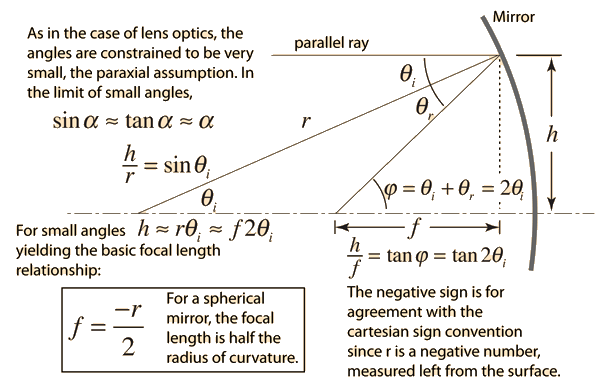Spherical Mirror Equation
The equation for image formation by rays near the optic axis (paraxial rays) of a mirror has the same form as the thin lens equation if the cartesian sign convention is used:

From the geometry of the spherical mirror, note that the focal length is half the radius of curvature:
 |
|
As in the case of lenses, the cartesian sign convention is used here, and that is the origin of the negative sign above. The radius r for a concave mirror is a negative quantity (going left from the surface), and this gives a positive focal length, implying convergence.

Mirror concepts
| HyperPhysics***** Light and Vision | R Nave |
